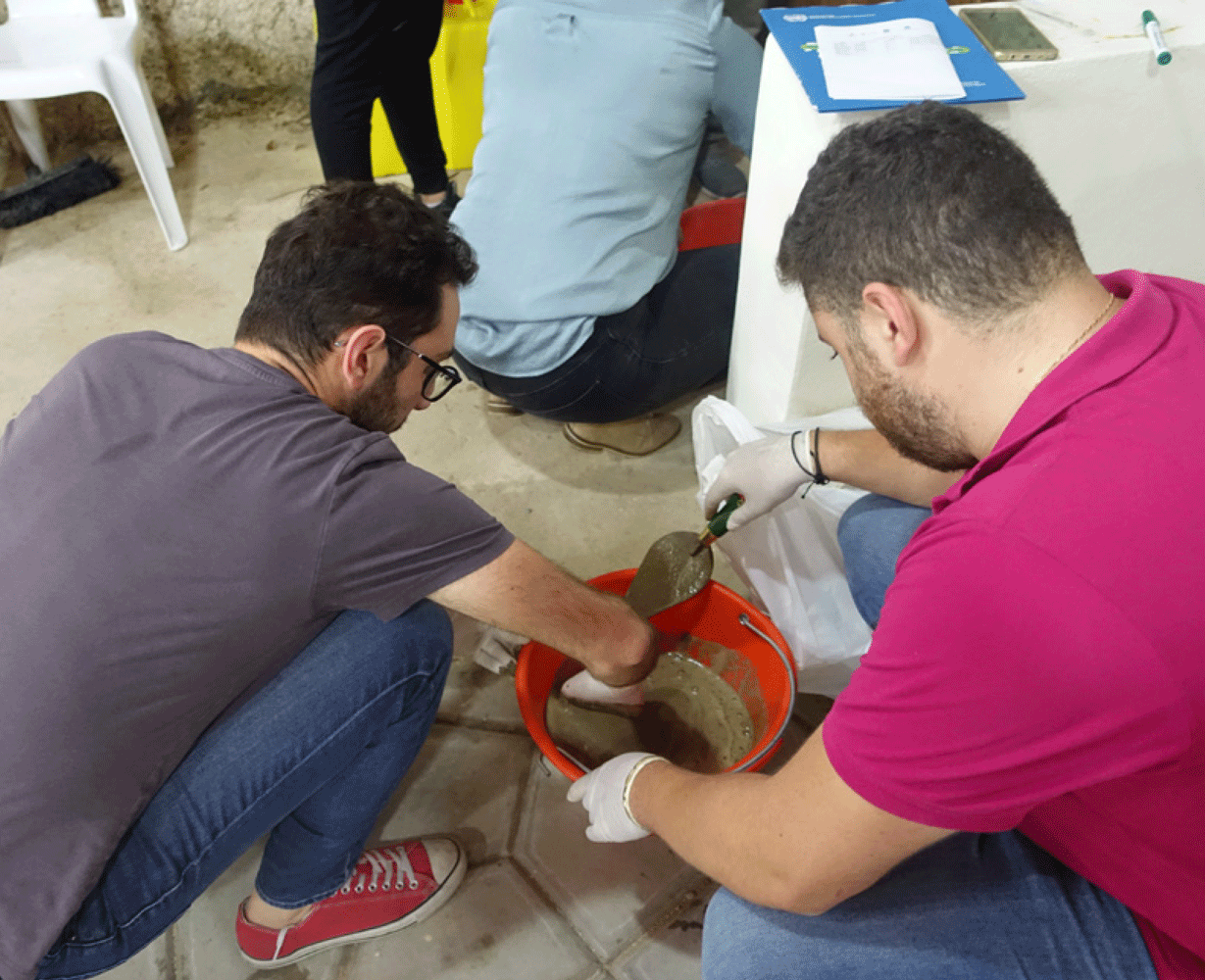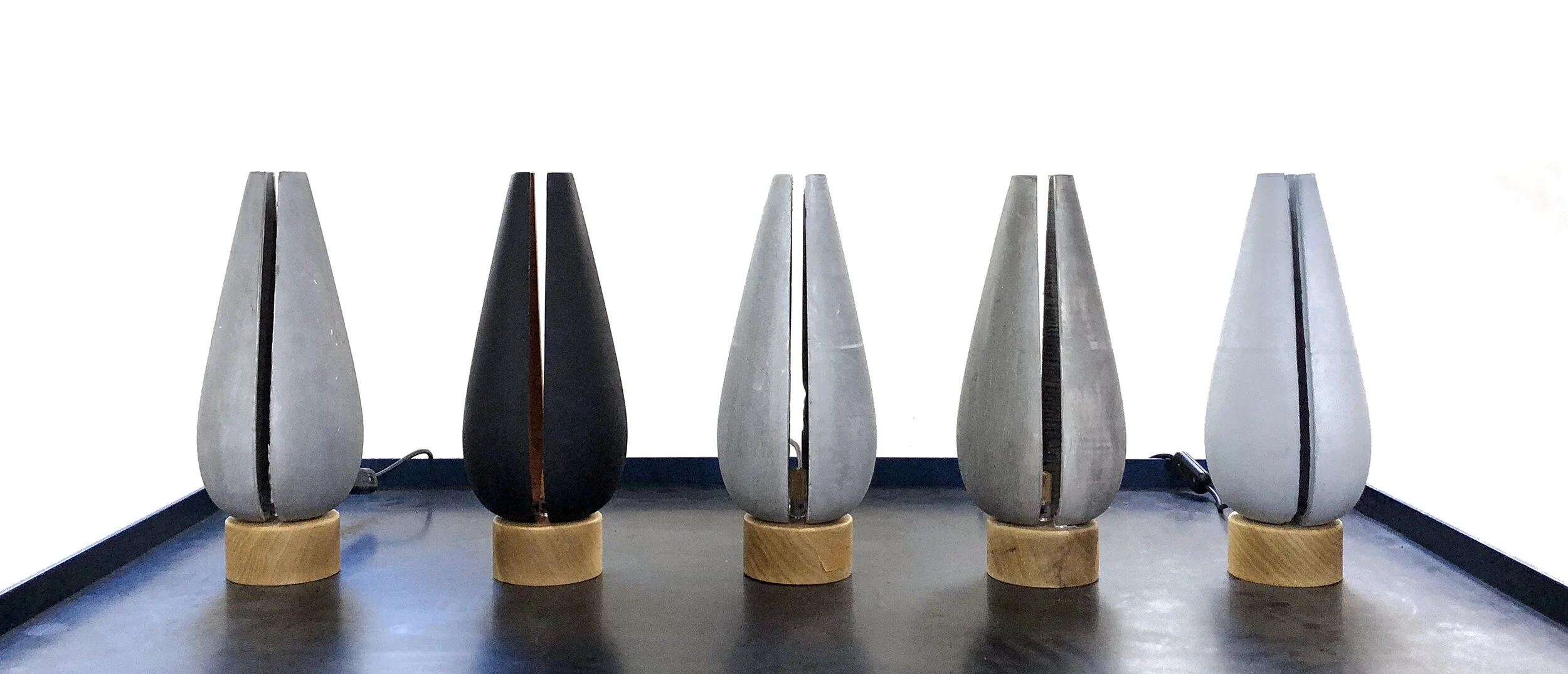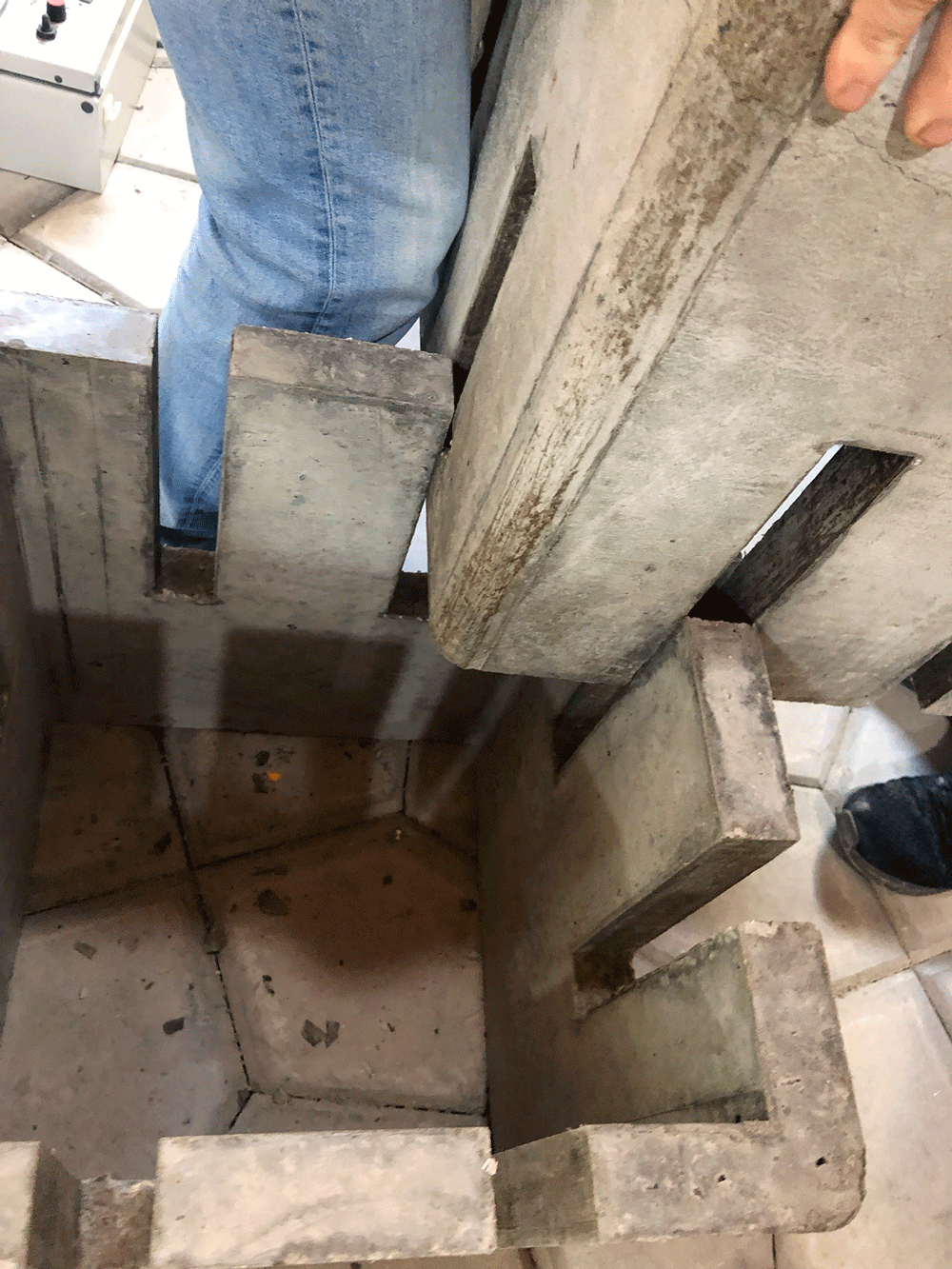SKILLS training ProGRAM
Organization: International Nations Industrial
Development Organization (UNIDO) Lebanon
Role: Design Lead
OVERVIEW
The brief for this project required two case-study designs that each comprised concrete and wood. My designs formed the foundation of a curriculum to teach craftspeople new uses of concrete. I designed the products and led the training of trainers session. After a rigorous research period, I determined that the first case study design, Misbah, would be a contemporary take on the old lanterns used in the region and specifically in Lebanon during power outages. The second design, Waha, is a modular unit that would could be assembled in various shapes and formats and placed in public spaces. While the first design is about revisiting a familiar product and casting it in new materials, the second acknowledges the lack of public spaces in Lebanon and the fact that people do not often treat outdoor spaces as public spaces. It was designed to encourage interactions among people as they used the product.
Each design emphasized different functions, but also different skills. Misbah requires intricate detail work suitable for indoor spaces, especially because the concrete mixture must be exact. Meanwhile, Waha gives participants experience dealing with larger-scale products, interlocking joints, and a more granular mix suitable for outdoor spaces.
THE PROCESS
Prototyping was an essential component of the design process for this project. It validated my expectations and tested the feasibility of the designs. The first prototype was made out of PLA plastic. This interaction validated the shape and the size of Misbah. Following the success of the first prototype, I moved to making a silicone mould to pour the cement mix into. This step also allowed me to test the consistency of the mixture. Because the cost of silicone moulds is high and it would take us a long time to produce 30 moulds, I determined that digitally-fabricated moulds were more suitable, because they are faster and cheaper to produce and the outcome is more consistent and accurate. For over three weeks, and with the support of Sika, I tested mixtures, adjusting the various proportions of cement, water, sand, plasticizer, latex, silica fume, and glass fibers in order to reach the desired mix in terms of strength, consistency, and surface finish. Time constraints did not allow me to prototype Waha. With input from the UNIDO team, I decided to use the training of trainers to prototype it. This was a necessary decision because the training site would have the appropriate mixers, equipment, and work space. To facilitate this process I prepared the production files for Waha’s mould and sent them to the site prior to the training of trainers. I also developed a list of material quantities and specifications and supported the UNIDO team in locating and purchasing them prior to the training. These additional steps were intended to save time and effort once we are on site for the training of trainers.
MAIN TAKEAWAYS
This project shows how interactions with artifacts stand to teach us a great deal about what interaction is and how we should design for it. The project highlights the significance of emotion in designing experiences. In particular, we might think of the role of nostalgia. Often these days, UX and UI designers are bombarded with the rhetoric of innovation, novelty, and the new, but examples like Misbah and Waha show that some of the most successful interactions actually take place through engagement with the past. It might be the revival of public spaces and the familiar knowledge of linking pieces from a childhood toy, or the familar shape of an old lantern. These products are an invitation to think about how emotions might shape the design digital products, as well.









